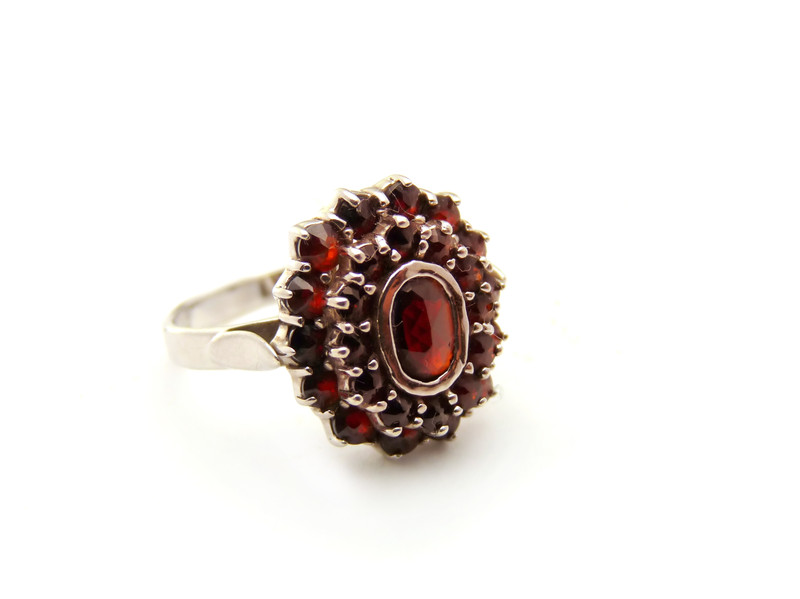All You Need to Know about January’s Birthstone: Red Garnet

What better way to bring in the New Year then with a birthstone as a gift for someone celebrating a birthday in January. This particular month, the birthstone is a beautiful red garnet. Garnets can come in a variety of different colors, but red is the most popular for this precious gemstone. Continue to read on to learn more about garnets as far as their color, origin, history, past uses by ancient cultures and current traditions.
The meaning behind the name and the origin of garnet
The ruby red gemstone name of origin comes from the word “granatum”/”granum” which means “seed” and “grain” because it looks like a pomegranate seed. Also, the Middle English word for dark red is “gernet,” but garnet can also mean a group of minerals that comes in a wide variety of colors. The reasoning behind the name of the gemstone is very true because it does come in a variety of different colors ranging from yellow, orange, green, and many other colors. However, the rarest color of all the different types of garnet is blue. When you think about it, it makes perfect sense as to why red is chosen as the color for January because during the middle of winter. When it is the coldest time of the year, it’s good to look at a gemstone with such a warm, bright color like the sun.

Garnet is not a very rare gemstone and can be found in pretty much every continent of the world. However, the most popular places to mine for large sources of garnet are located in Africa, Sri Lanka, and India. Each garnet mining location will have a different name for the gemstone based on the color, density, and refraction capacities. Therefore, yellow garnet from Sri Lanka is called hessonite; pink/purple garnet from Africa is referred to as rhodolite; and classic red garnet in the United States is known as pyrope.
Ancient and traditional symbolism of garnet

Ancient cultures have been using garnets for centuries ever since the Bronze Age around 3100 B.C. when they were used by Egyptians to encrust their jewelry. Archaeologists have also discovered garnet in excavation sites from the Greek and Roman eras. It’s said that travelers during ancient times would wear talismans with the gemstones to light up the night and protect themselves from any form of danger or evil spirits. It was even believed that the garnet can help to protect a person’s soul during its travel to the afterlife.
Many biblical and Greek stories include the origin of the garnet gemstone. Legend has it that Noah attached a very large garnet onto one of the masts of the Ark in order to survive and light the way through the Flood. According to Greek myth- Hades, the god of the underworld, gave pomegranate seeds to the goddess of sunshine, Persephone, only to discover later that the seeds had been turned into garnet gemstones.
During the Middle Ages, people who were considered to be healers or medicine men would use the gemstone to protect people and use it to help heal different areas of the body:
- Arthritis
- Pancreas
- Veins
- Blood Disorders
- Infections
Red garnets, similar to red roses, are also used to as a representation for friendship, loyalty, and sincerity.
Modern Day Traditions
Today, we continue to use red garnets as symbols. Besides being the choice of birthstone for January by the American Gemstone Society, it is also the traditional gemstone to celebrate the 2nd wedding anniversary. According to the Zodiac, it is also the gemstone for the Aquarius sign (January 20-February 18).
Giving the gift of a red garnet birthstone for January is a thoughtful present that can brighten someone’s day during the cold and dreary winter.
You may also like ...
- Ancient Cures and Tales about Amethyst Gemstones
- The Most Valuable Gemstones You Never Knew Existed
- What To Know About The Birthstones For October: A Wide Variety Of Color
- What You Don’t Know About September Birthstones
- Infographic: Almost everything you need to know about birthstones
- Facts about Winter Birthdays: Birthstones to Flowers for November and December













